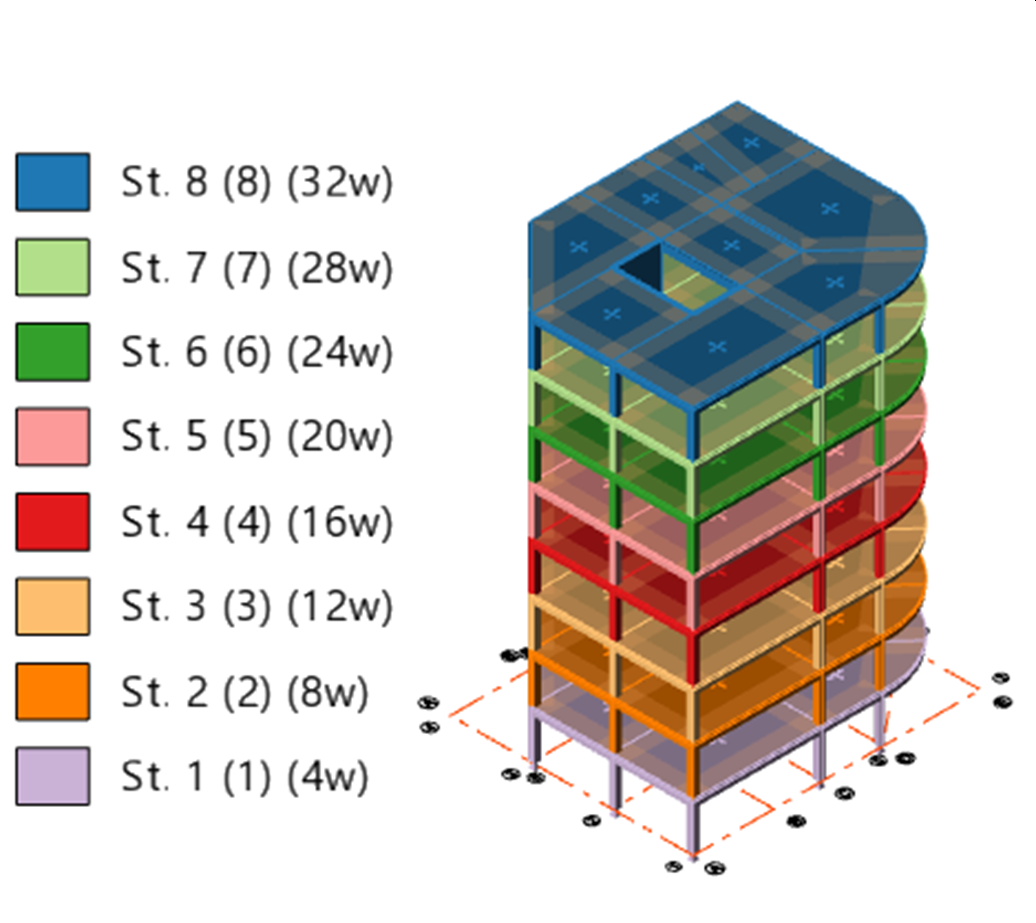Groundbreaking construction analysis SCA, alters the engineering field

David Sanderson, product manager for analysis and design at Trimble, believes accuracy has become the backbone of modern structural engineering. As buildings keep reaching new heights and complexity, engineers need analysis tools that mirror what really happens during construction. That’s exactly what Staged Construction Analysis, or SCA, is designed to do.
With the aid of SCA engineers gained a tool that demonstrates the behavior of a building through every phase of construction instead of treating it as a finished product. It should be noted that as new floors, connections and materials are added in every phase, the structure changes. Its stiffness, loads and overall behavior evolve, however, by analyzing the process step by step, engineers can see how each stage affects the next, creating a far more realistic picture of the structure’s performance.
The method is especially useful for tall concrete buildings, where time-dependent effects like creep, shrinkage and stiffness changes can alter the final result. With SCA, engineers can study how construction speed, sequence and loading affect the outcome. This often leads to smarter, leaner designs that use materials more efficiently.
Before this approach, designers relied on traditional 3D or “chasedown” analyses, which tended to be overly cautious and sometimes led to overdesign. SCA sits in between — realistic without being conservative — helping engineers fine-tune results and cut down on unnecessary materials or supports.
In addition, SCA simplifies checks for wind and seismic drift as engineers can manage everything within a single staged model, saving time and reducing errors. Moreover, this model analysis can handle and effects, such as sway and bending. For example, if stiffness changes as the building is rising, the model of SCA can give a more accurate picture of how internal forces build up. Ultimately, engineers can avoid exaggerated results and improve building efficiency.
With software like Tekla Structural Designer, this process is now part of everyday workflows. It lets engineers define stages, apply loads and analyzes performance in one model. The goal isn’t to replace expertise, but to support it — producing designs that are more accurate, economical and true to how buildings are actually built.
Sources: pbctoday.co.uk, support.tekla.com
Want to read more like this story?
Structural Analysis
Sep, 16, 2022 | EducationThe prediction of the response of structures when they are subjected to specified arbitrary extern...

Advanced Analyses for Concrete Structures in RAM Frame
Apr, 20, 2022 | NewsThe RAM Frame analysis in RAM Structural System completes a three-dimensional finite element analys...

Time History Analysis: process and advantages
Feb, 27, 2024 | EducationIn the field of structural engineering and design, the examination of dynamic loads is significant...

How advanced finite element analysis can prepare buildings for extreme events
Nov, 14, 2024 | NewsWhile most structural analysis software can evaluate everyday stresses, they often fail to prepare...

It’s a good time to be a Structural Engineer!
Feb, 06, 2024 | NewsRead our interview with Joshua Taylor, PE (CA, WA), Senior Director of Product Management and Jan...

Bentley Webinar | Advanced Dynamic Analysis in STAAD.Pro
Jan, 26, 2023 | EventSTAAD is a popular structural analysis application known for advanced analysis, diverse application...

Concrete Design Workflows in RAM Structural System
Apr, 13, 2022 | NewsDue to RAM Structural System’s reputation as a market leader for the design of steel structures, en...

Bentley Webinar Series: Transforming Engineering with Bentley's Advanced Structural Solutions
Aug, 12, 2024 | EventJoin this unique Bentley webinar series to explore STAAD.Pro, Structural Worksuite and RAM Connecti...

Designing Steel Connections from Your Structural Analysis Program
Apr, 07, 2022 | NewsIf beams and columns are the bones of a structure, then connections are the joints that keep it all...
Trending

Spectacular interchanges around the world

New Release - STAAD.Pro 2024 - 2

ADINA 2025 for Structural WorkSuite

ADINA 2025 New Release!

Concrete Buildings as Rechargeable Batteries

Powerful earthquake shakes central Philippines, dozens killed

Indonesia school collapse: three fatalities and dozens injured

